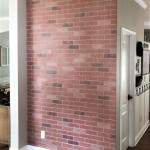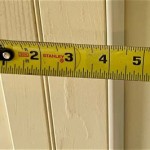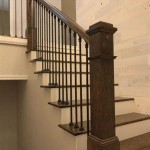How To Tell Your Interior Design Style
Defining your interior design style is crucial for creating a space that reflects your personality and brings you joy. It guides your decisions, from choosing furniture and colors to selecting artwork and accessories. Understanding your style helps you make cohesive design choices and avoid haphazardly adding elements that don't fit together. This article explores how to identify your interior design style, providing valuable insights for creating a harmonious and personalized living environment.
1. Analyze Your Preferences
The journey to identifying your interior design style begins with introspection. Consider the following questions to gain insight into your aesthetic preferences:
What colors, textures, and patterns do you gravitate towards?
Do you prefer bold and vibrant hues or soft and muted tones? Are you drawn to smooth surfaces or natural materials? Do you enjoy intricate patterns or simple, minimalist motifs?What kind of atmosphere do you want to create in your home?
Do you desire a cozy and inviting space or a formal and sophisticated ambiance? Are you seeking a serene and minimalist environment or a lively and eclectic one?What are your favorite architectural styles?
Do you admire the grandeur of Victorian architecture or the clean lines of modern design? Do you appreciate the charm of rustic farmhouse styles or the elegance of traditional interiors?What are your favorite hobbies and interests?
Do you enjoy reading, gardening, cooking, or traveling? Incorporating elements related to your hobbies can enhance the personality of your space and reflect your passions.What are your lifestyle needs?
Do you entertain frequently or prefer a quiet and serene environment? Do you need ample storage space or prioritize open and airy layouts?
By reflecting upon these questions, you can identify recurring themes and preferences that reveal your underlying design style. This self-awareness is essential for making informed decisions about your interior design choices.
2. Explore Different Design Styles
There is a wide range of interior design styles, each with its unique characteristics and aesthetic principles. Exploring these styles will help you identify which ones resonate most with you.
Modern:
Known for clean lines, minimal ornamentation, and a focus on functionality. Often features neutral color palettes, natural materials, and bold geometric shapes.Contemporary:
Similar to modern but emphasizes current trends and a more eclectic approach. May incorporate vibrant colors, unexpected textures, and unique art pieces.Bohemian:
Celebrates eclecticism and individuality. Often features layers of textures, vibrant colors, global influences, and vintage finds. Creates a bohemian atmosphere that feels relaxed and free-spirited.Industrial:
Inspired by industrial spaces and factories. Characterized by exposed brick walls, metal accents, reclaimed wood, and a raw and unfinished aesthetic.Farmhouse:
Embraces warmth, simplicity, and natural elements. Often features rustic wood, whitewashed finishes, floral patterns, and a touch of vintage charm.Traditional:
Revolves around timeless elegance and classic designs. Features rich fabrics, intricate details, symmetrical layouts, and a sense of formality.Transitional:
A blend of traditional and modern elements, creating a harmonious balance between classic and contemporary styles.
Browse interior design magazines, websites, and social media platforms to gain a deeper understanding of each style. Pay attention to the colors, textures, furniture pieces, and overall ambiance that each style embodies. This exploration process will help you narrow down your preferences and start to define your own unique style.
3. Create a Mood Board
Once you have a better understanding of different design styles, it's time to create a mood board. This visual tool helps you gather inspiration and solidify your design direction.
Start by collecting images of interiors, furniture, fabrics, colors, textures, and artwork that appeal to you. You can use physical materials like magazine clippings or create a digital mood board using online tools like Pinterest or Canva. Arrange the images in a way that reflects your chosen style and creates a cohesive visual narrative.
The mood board will serve as a guide for making design decisions. It helps you visualize how different elements work together and ensures consistency across your space. You can revisit and refine your mood board over time as your preferences evolve.
4. Consider Your Home's Architecture
The architecture of your home plays a significant role in shaping your design style. Consider the following factors:
Size and Layout:
A small space may require a minimalist approach, while a spacious home allows for more elaborate designs.Window and Door Placement:
Determine how natural light affects the space and factor that into your color choices and furniture arrangement.Architectural Features:
Embrace existing architectural elements, such as crown molding, fireplaces, or built-in shelves, to create a cohesive and personalized style.
By taking your home's architecture into account, you can create a design that complements its unique features and emphasizes its strengths.

Dear Urbaneer How Do We Establish Our Interior Design Style

How To Figure Out What S My Design Style Worthing Court

How To Choose An Interior Design Style The Beauty Revival

How To Find Your Unique Personal Interior Design Style Dwell Beautiful

How To Choose An Interior Design Style The Beauty Revival

What S Your Interior Design Style

What Is My Interior Design Style Here S How To Find Out Welsh Studio

A Guide To Interior Design Styles How Find Your Unique Home Decor Style Primer

Why Is It Important To Determine Your Design Style Cristina Isabel

Find Your Interior Design Style Quiz Southern Motion
Related Posts








